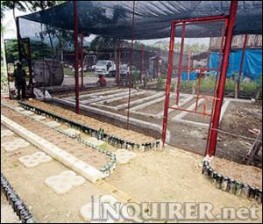
Backyard gardening can also make Filipinos less dependent on food imports, Hygea Ceres Gawe of the NNC nutrition surveillance division said recently at a forum organized by Save the Children Foundation.
“Filipinos need to be self-sufficient especially in staple foods. This will allow us to be less dependent on imported staple food, the prices of which are increasing,” Gawe said.
She said the council was encouraging households to plant leafy vegetables because these have a high mineral content.
Tubers like camote (sweet potato) are also another option. “They can use it as a rice substitute,” she said.
Model communities
A project that taught families to transform their backyards into vegetable gardens has pushed down hunger incidence in model communities, said Norma Pongan, program manager of Save the Children.
More than 1,500 families in Parañaque City, Lake Sebu in South Cotabato province and San Remigio in Antique province have set up household gardens.
The project, with support from Kraft Foods Philippines, has resulted in a decrease in the participants’ self-rated hunger from 47.6 percent to 36.7 percent, Pongan said.
“We hope the results of the project in our project sites, especially Parañaque City, a highly urbanized area where malnutrition is the sixth cause of death among children under 5 years old, may be replicated in other cities and municipalities.
From 15.6 percent, the number of underweight children ages 0 to 59 months has been reduced to 13.0 percent. It is our duty to help every child attain their right to be healthy and well nourished,” Pongan said.
Inadequate calories
Gawe said Filipinos were eating less nutritious foods because they could not afford the more nutritious alternatives.
Two out of every three Filipino households have been found to have inadequate food intake, she said.
“They are not meeting their caloric intake. For average Filipinos, that’s 2,000 calories per day,” Gawe said in an interview.
Intake of carbohydrates and protein in many households has also declined.
Income not enough
Close to three of every four households were worried about the sufficiency of food because they do not have money to buy food, according to Gawe.
“One of the reasons they tell us is that the prices of commodities are increasing and their income is not enough. There is limited food purchasing power,” she said.
The NNC findings jibe with results of a survey by the Bureau of Agriculture Statistics (BAS), which point to an imbalance in the Filipino diet.
A BAS survey released last December said Filipinos’ rice consumption remained high, but their intake of meat and vegetables had gone down over the years, a sign that they could not afford a more varied and nutritious diet.
The BAS said a Filipino ate 308.93 grams of rice a day in 2010, up from the base level of 282.63 grams per day in 2000. That amount of rice provided 1,102.88 grams of calories and 23.17 grams of protein.
Filipinos were also eating less beef than before. Their average beef intake per day in 2010 went down to 6.57 grams from the base level 7.70 grams per day. They were also eating less vegetables, according to the BAS.